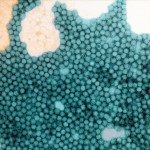Virologie 2018; 22(6) : 289-303 doi:10.1684/vir.2018.0756
Depuis l’identification des premiers entérovirus, la classification et la nomenclature de ces virus ont été remaniées à de nombreuses reprises. Le fondement même de la classification a été modifié au cours des années 2000 lorsque les critères génétiques ont supplanté les critères sérologiques pour l’identification et la classification des entérovirus. Fruit de ces remaniements, la classification et la nomenclature actuelles sont souvent assez déroutantes pour l’étudiant, le chercheur ou le praticien qui s’intéresse pour la première fois à ces virus ; coxsackievirus A et B côtoient echovirus et poliovirus au sein de différentes espèces tandis que, de façon peu intuitive au regard de l’étymologie, les rhinovirus appartiennent désormais au genre Enterovirus.
Cette revue a pour but de présenter un aperçu historique des méthodes et des concepts qui ont été utilisés pour élaborer les classifications successives de ces virus et des découvertes qui ont conduit à les réformer. Souvent subtiles, parfois profondes, les modifications apportées au cours du temps retracent l’histoire de nos connaissances concernant les entérovirus et celle de notre compréhension de la diversité qu’ils présentent ; en creux, elles révèlent surtout notre ignorance.




